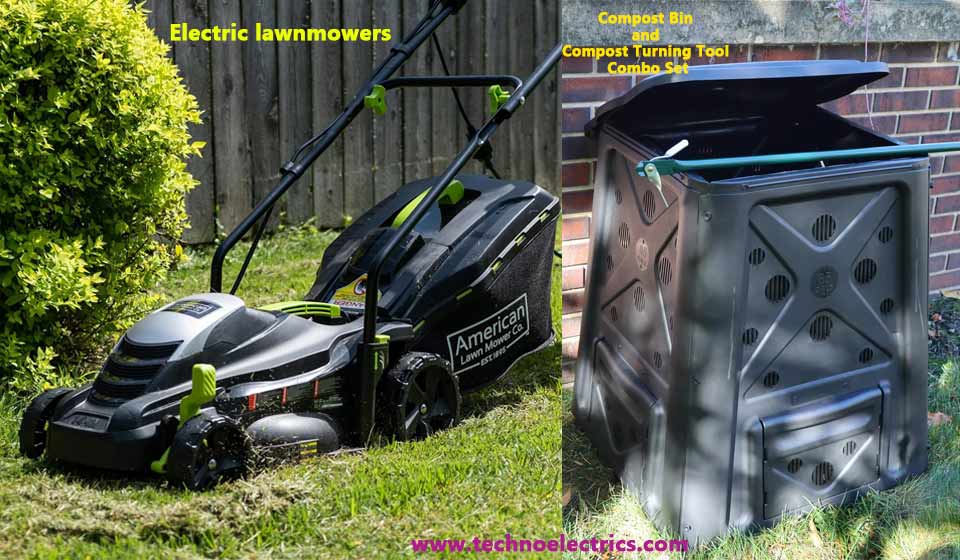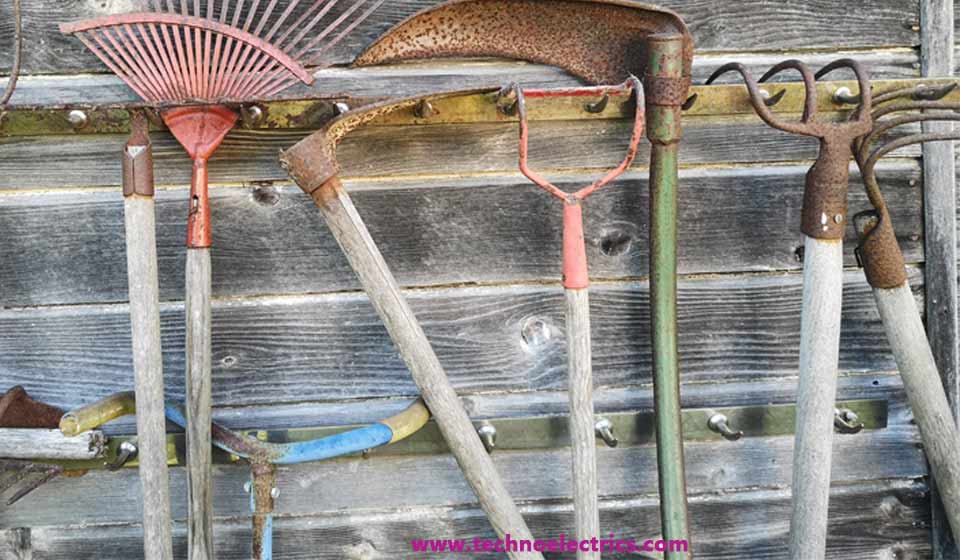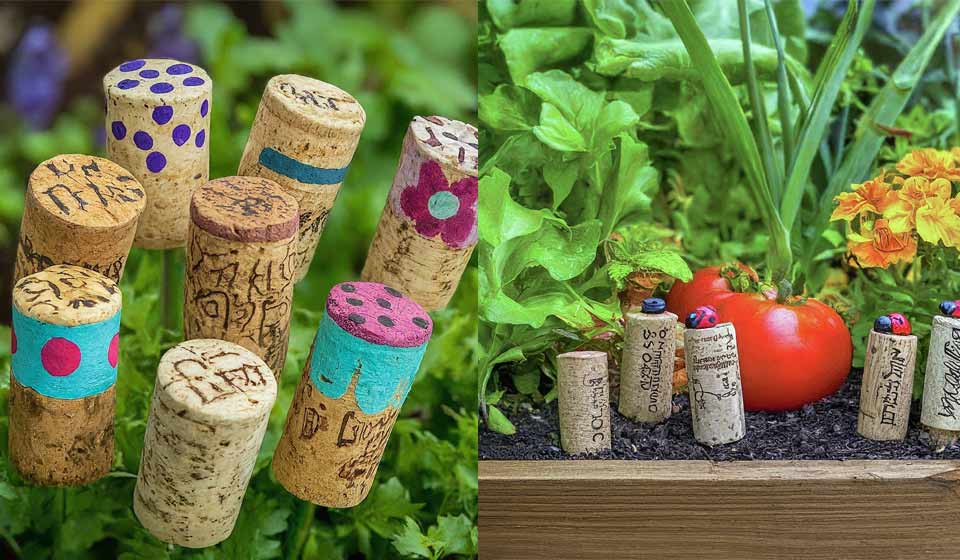This guide explains gardening tool variations in a thorough overview, emphasizing the most important tools for a fruitful gardening endeavour. It includes multipurpose instruments, innovative technology, environmentally conscious choices, and reasonably priced selections.
Along with providing advice on how to preserve and prolong the life of tools. Gardening enthusiasts may grow a successful garden and experience the delights of nurturing life with the appropriate equipment.
Gardening Tools & Variations
Tools can make gardening duties more pleasurable and effective, helping to save energy and strain. It can also be utilized for specialized activities and aid in maintaining the health and aesthetics of plants.
Eco-friendly instruments are long-lasting and composed of sustainable materials, which minimizes their negative effects on the environment and eliminates waste and the need for frequent replacements. let’s dive deep!
Also Read: Gardening: How Is Technology Used In Gardening?
A). Must-Have Gardening Tools
For many people, gardening is a cherished activity that brings them peace and contentment. But without the proper equipment, gardening can quickly become a laborious and tedious endeavour.
Purchasing the appropriate gardening equipment may significantly impact the success and pleasure of your gardening endeavours. Here is the detail.
1. Hand Trowel: This compact, portable tool is the gardener’s best buddy. It works great for weed removal, sowing seedlings, and tiny hole digging. Seek a trowel with a strong, rust-resistant blade and an ergonomic handle.
2. Pruning Shears: To keep your plants healthy and shaped, you need pruning shears. They are ideal for deadheading flowers, pruning branches, and reshaping plants. Seek a pair with a comfortable grip and a sharp bypass blade.
3. Garden Hoe: Any gardener with a sizable garden needs this item. It works well for loosening the soil, pulling weeds, and planting trenches. Seek a hoe with a strong grip and an angled, sharp blade.
4. Garden Rake: A garden rake is needed to remove garbage and level the soil. It’s also helpful for levelling beds and applying mulch. Seek a rake with a pleasant grip and flexible, rust-resistant tines.
5. Wheelbarrow: For moving bulky items like plants, mulch, and dirt, a wheelbarrow is a gardener’s greatest friend. Seek a huge-capacity wheelbarrow that is durable, well-balanced, and has a pleasant grip.
6. Garden Gloves: Wearing quality garden gloves protects your hands from thorns, scratches, and blisters. Look for gloves with reinforced fingers, breathable material, and a decent fit for further safety.
7. Watering Can: Every gardener needs a watering can, but container gardeners especially need one. Choose a can with a convenient grip for portability and a large spout for accurate watering.
Tips For Choosing the Right Tools
- Consider the size and variety of your garden’s plants. A huge wheelbarrow would not be necessary for a small garden, but a pruning saw might be useful in a large garden with plenty of trees.
- Consider your physical capabilities. Choose lightweight instruments with pleasant handles if your strength or movement is restricted.
- Search for well-built structures and materials. Purchasing sturdy equipment will help you save money over time and simplify gardening chores.
- Take into account the local weather and environment. If you reside in a wet climate, seek equipment that won’t rust. Select tools with grippy handles that won’t become too hot to handle if your summers are scorching.
- Don’t be scared to experiment with several brands and gadgets to see which suits you best. Everyone has different tastes.
Also Read: What Are The Latest Innovations In Gardening?
B). Multifunctional Gardening Tools
Multifunctional gardening tools are designed to do several gardening chores, eliminating the need for multiple tools. Because of their versatility, these tools may be used for various gardening tasks, including planting, trimming, and digging.
Additionally, their lightweight and compact form makes them simple to store and move throughout the yard.
1. Garden Tool Set with Interchangeable Heads
This tool set has conveniently attachable and detachable interchangeable heads with a handle. The heads include a cultivator, rake, and trowel. This set allows you to save money and space by not needing numerous sets of tools.
In addition, it is ideal for balconies or little gardens with little room for storage.
2. Folding Garden Stool with Tools
A gardening stool that folds up into a small package for convenient storage, this multipurpose equipment is useful. Additionally, the stool has integrated gardening equipment, including pruning shears, a weeder, and a trowel.
This tool is ideal for elders or anyone with restricted movement. It allows them to tend to their garden and provides a comfy seat.
3. Multi-bladed garden shears
These shears include replaceable blades that are simple to swap out for various cutting, sawing, and trimming jobs. Eliminating the need for different tools saves money and space.
Because the various blades enable more exact cutting, they are also excellent tools for precision gardening.
Also Read: Unique Gardening Tools That Will Up Your Gardening Game
C). Innovative Gardening Tools
Technologies and tools for gardening are always developing, and new goods are introduced to the market each year. Many solutions are available for gardeners who want to integrate technology into their practice. Here is a brief overview.
1. Soil sensors
Soil sensors are revolutionary. They allow gardeners to access real-time information on soil temperature, moisture content, and nutrient levels. Knowing this information is essential to keeping plants healthy and promoting their development.
With soil sensors, gardeners can effortlessly monitor and modify their fertilization and watering regimens, promoting healthier plants and increased harvests.
2. Vertical Gardening Systems
Limited space is a typical problem for many gardeners, leading to the popularity of vertical gardening systems. These systems allow gardeners to grow plants vertically, utilizing wall space and clearing space on the ground.
Vertical gardening solutions are available in various styles and can be used for indoor and outdoor horticulture. In addition to conserving space, they give a distinctive look to any landscape.
3. Electric Pruning Shears
Although pruning is a necessary gardening activity, it may be physically demanding, particularly for gardeners with sizable plots. Electric pruning shears have transformed this operation, making it faster and easier.
These battery-powered shears have a sharp blade that easily slices through branches. Additionally, they make pruning more pleasurable by lessening the pressure on the hands and wrists.
Also Read: Gardening Tools: What Are Common Gardening Tools?
D). Eco-Friendly Gardening Tools

Conventional gardening implements, including chemical insecticides and gas-powered lawnmowers, may harm the environment. These instruments add to resource depletion and contamination of the air and water.
We may lessen our environmental effects and contribute to developing a more sustainable future by utilizing eco-friendly equipment.
1. Sustainable materials for hand tools
Sustainable materials, such as bamboo or recycled plastic, may significantly impact the quality of hand tools, which are indispensable for any gardener. Compared to typical instruments made of non-sustainable materials, these materials are less carbon-intensive and biodegradable.
2. Manual or Electric lawnmowers
Gas-powered lawnmowers may be noisy and costly to run and are a significant source of air pollution. Switching to an electric or manual lawnmower can help you save money over time and lessen your carbon impact.
Manual mowers are the most environmentally friendly choice because they use no electricity, whereas electric mowers run on rechargeable batteries.
3. Composting tools
Composting is a great technique for cutting waste and providing nutrients to garden soil. Using environmentally friendly equipment, such as a compost bin constructed from recyclable materials, helps maintain the health of the environment and your garden.
Thanks to these instruments, composting is now simpler and more effective, benefiting the environment and you simultaneously.
Also Read: Best Gardening Tools According To Experts
E). Budget-Friendly Gardening Tools
Gardening is a fantastic pastime that helps us to build lovely outside places and connect us with nature. But it may also be costly, particularly if gardening equipment is needed.
But worry not—many reasonably priced alternatives exist that are as reliable and efficient as their more expensive equivalents. Please! read further for details.
Tips for Gardening on a Budget:
1. Plan Ahead: Spend some time determining your gardening requirements before you head to the shop to buy gardening items. This will assist you in focusing on the necessary equipment you genuinely need and prevent impulsive purchases.
2. Do Your Research: Don’t buy the first tool you come across. To discover the greatest bargains, shop about and check costs at several retailers or online. You may also watch for deals or discounts to save even more money.
3. Buy Used: Rather than purchasing brand-new tools, purchase used ones. Thrift stores, garage sales, and internet marketplaces are excellent venues to locate good bargains. Just be sure to thoroughly check the tools to ensure they are in good shape before purchasing.
4. Invest in Quality: Purchasing the cheapest equipment on the market may seem alluring, but over time, purchasing quality tools might save you money. You will eventually save money since they will live longer and need replacement less frequently.
Top 3 Low-Cost Gardening Tools
1. Hand Trowel: Every gardener needs this compact, portable equipment. It works great for loosening dirt, planting seedlings, and digging tiny holes. Seek a trowel with a comfortable grip and a strong metal blade.
2. Pruning shears: These are needed for trimming and pruning plants. Seek a pair with a comfortable grip and sharp blades. Pruning shears with interchangeable blades are also available, lowering their overall cost.
3. Garden Hoe: A garden hoe is an adaptable tool for breaking up soil, digging, and pulling weeds. For greater leverage, choose a hoe with a long handle and a sharp blade.
Also Read: 12 Top Gardening Tools For Your Ease
F). Maintenance and Care of Gardening Tools

Like any other equipment, gardening tools are vulnerable to wear and tear. They may rust, dull, or shatter if exposed to dirt, dampness, or other environmental factors.
This might endanger the user’s safety and impair the tools’ functionality. Proper upkeep and care can keep gardening equipment in good operating order and avoid these problems.
Furthermore, purchasing high-quality gardening equipment can be costly; nevertheless, you can maximize your investment with the right care. Proper care of your instruments may also result in long-term financial savings because you won’t need to replace them as frequently.
Tips for Cleaning, Storing, and Sharpening Tools
- Cleaning: It’s crucial to clean your gardening equipment after every use to remove any dirt, debris, or plant residue that may have accumulated on it. After cleaning the instruments with a brush or towel, wipe them down with a moist cloth. For more stubborn stains, you can use a light soap or detergent. Before storing the tools, make sure they are completely dry.
- Storage: Proper storage is essential to keeping your gardening equipment in good condition. To prevent rust, keep it dry and well-ventilated. To keep it accessible and tidy, put it in a toolbox or hang it from a pegboard.
- Sharpening: Dumb equipment can harm plants and make gardening more difficult. Maintaining the best possible condition for your gardening tools requires routine sharpening. Sharpening shears and blades can be done using a file or sharpening stone; smaller instruments, such as scissors and hand pruners, can be sharpened with a whetstone.
How to Make Your Gardening Tools Last Longer:
In addition to routine upkeep and care, you may take the following extra actions to increase the longevity of your gardening tools:
- Employ the appropriate tool for the work at hand to save needless wear and strain.
- Avoid leaving equipment out in the weather or the garden for long periods.
- To maintain smooth functioning and avoid corrosion, lubricate moving components.
- To prevent more damage, replace any broken or damaged parts immediately.
- To avoid mishaps and damage, carefully put away tools after each use.
Paying attention to these guidelines ensures that your gardening equipment survives for many more seasons.
Also Read: Top 10 DIY Gardening Tools
G). Handmade Gardening Tools

Gardening tools manufactured at home, as opposed to being bought from a store, are known as DIY tools. Depending on your demands and level of inventiveness, these tools can be anything from straightforward and basic to intricate and cutting-edge.
The best thing about making your own gardening equipment is that you can tailor them to meet your unique needs and save money.
1. Seedling Pots: Instead of purchasing pricey seedling pots, you can construct your own using newspapers. Just wrap a newspaper page into a cylinder and fold the bottom to make a foundation. When the seedlings are ready, these pots may be put straight into the ground because they are eco-friendly and biodegradable.
2. Garden Markers: Create your own garden markers using paint and wooden spoons to keep track of your plants. Put the spoon in the ground close to the plant and write its name on it. This is a unique and entertaining way to label your garden, and it may be a wonderful way to get the kids involved in gardening.
3. Watering Can: Is there one you don’t have? Not a problem! Make your own DIY watering can by just making holes in the lid of a plastic milk jug. This is a fantastic method to reuse plastic bottles and cut costs associated with purchasing a watering can.
Advantages
1. Cost-effective: Making your own gardening tools at home is a terrific method to cut costs on pricey equipment. Using supplies you already own may drastically reduce the cost of gardening.
2. Customizable: You may readily alter homemade gardening equipment to meet your unique requirements. Depending on the work at hand, you may make them as basic or as complicated as you choose.
3. Eco-Friendly: Repurposing household objects to produce gardening equipment can reduce trash and encourage a more sustainable lifestyle. This is a fantastic method to lessen your carbon footprint and help the earth become greener.
Conclusion
Gardening is a way of life, not simply a pastime, and having the correct equipment can make it much more enjoyable. This article has served as your one-stop shop for anything related to gardening tools.
It also covers advantages, essential choices, economical and environmentally friendly solutions, helpful maintenance advice, and even suggestions for do-it-yourself projects.
With the help of this extensive guide, we hope you’ll be able to build the ideal gardening tools and develop a greener thumb. Recall that all it takes for a garden to flourish is the correct equipment and a little bit of creativity. Happy gardening!
Recent Posts
Here is reply of high-demand removable wallpapers. The wallpaper industry has changed a lot in recent times, with the launch of removable wallpaper being seen as a blessing for homeowners, renters,...
Brown is an often neglected color when considering interior design but brown decor living room ideas could make your house feel warm, sophisticated, and timeless. More adaptable than any other...



